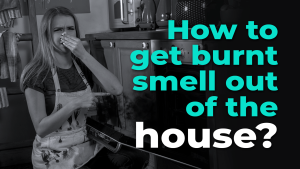Licensed And Insured

How to Clean Bathroom Walls | Spotless Magic World
Keeping bathroom walls clean is not only for aesthetics but also for hygiene. The problem is, it’s slightly overwhelming to know where to start with cleaning bathroom walls effectively. Be it mold, mildew, or soap scum, the surfaces require specific care to remain spotless.
With the proper ways and some tips to get you through, it needn’t be an uphill struggle to keep bathroom walls clean. In this blog, we will cover everything from the best methods of cleaning bathroom walls down to specialized techniques for different wall types.
Why Do Bathroom Walls Get So Dirty?
Knowing what is common that makes dirty bathroom walls will help you avoid grime building up in the first place and make cleaning so much easier.
Mold and Mildew
Bathrooms are inherently humid, which provides just the right setting for mold and mildew to blossom. For this reason, learning how to remove mold from bathroom walls is important; mold is not only unsightly, but if it goes unaddressed, it presents health concerns. Mold commonly appears as dark spots, often black or green, and tends to grow on damp walls. Here’s a set of key points for your consideration:
- Health Risks: Mold can cause respiratory issues, especially in people with allergies or asthma.
- Common Appearance: Typically shows up as black or greenish spots, making walls look dirty.
- Growth Conditions: Mold thrives on surfaces that stay damp, such as bathroom walls.
- Prevention Tips: Improve ventilation and reduce moisture buildup to keep mold from growing.
By addressing mold early and regularly maintaining bathroom walls, you can keep this common issue under control and ensure a healthier bathroom environment.
Dust and Lint
Dust and lint may not seem like obvious culprits in the bathroom, but they often settle on walls, especially in areas with poor ventilation. Over time, this buildup can make walls appear dull and unclean.
- Poor Ventilation: Low airflow allows dust and lint to accumulate more quickly.
- Dull Appearance: Dust buildup gradually causes walls to lose their original freshness.
- Simple Solution: Regular dusting and improving ventilation can help keep walls looking clean.
Product Residue
Hair and body products like shampoos, conditioners, and body washes can leave a sticky film on bathroom walls. This residue can attract more dirt, making walls look grimy.
- Sticky Residue: Product buildup can create a sticky layer that’s hard to remove.
- Dirt Magnet: Residue attracts dust and other particles, adding to wall grime.
- Preventative Tip: Wipe down walls after showers to prevent residue buildup.
Soap Scum and Hard Water
Soap scum and hard water deposits are notorious for leaving hazy or discolored patches on bathroom walls. Cleaning soap scum off bathroom walls is essential for restoring their shine and keeping the bathroom fresh.
- Hazy Appearance: Soap scum can create a cloudy film that dulls wall surfaces.
- Hard Water Deposits: Mineral buildup from hard water contributes to stubborn stains.
- Regular Cleaning: Frequent wiping can prevent scum and mineral buildup, keeping walls bright and clean.
How Often You Should Clean Bathroom Walls
Keeping the walls clean in bathrooms enhances not only space appearance but also creates a healthier environment without developing mold, mildew, and grime buildups. However, the question of how often bathroom cleaning should be done is really subjective and largely depends on usage-the number of users and the frequency of use.
Used Daily by Multiple People
In busy bathrooms, especially those shared by families or multiple people, grime, soap scum, and moisture accumulate quickly. For these high-traffic areas:
- Deep Cleaning: Every two weeks is ideal for a thorough scrub, which includes removing soap scum, mold, and any product residue that may have built up.
- Spot Cleaning: Weekly spot cleaning can help prevent heavy buildup, making deep cleans easier. Focus on areas prone to spotting, like near the shower or tub, where water, steam, and products are used regularly.
Used Daily by One or Two People
Bathrooms that aren’t as busy may not need cleaning as often, but regular maintenance is still necessary to prevent dust and moisture from settling on the walls.
- Deep Cleaning: Once a month is generally sufficient. This deep cleaning will address any emerging soap scum, dust, or mildew that may have accumulated over the month.
- Spot Cleaning: Consider doing a quick spot clean every two weeks, focusing on areas that get damp or are prone to soap scum buildup.
Additional Tips:
- After Shower Routine: In any bathroom, especially those with frequent use, wiping down walls with a microfiber cloth after showers can prevent moisture buildup, reducing the frequency of needed deep cleans.
- Ventilation: Keeping the bathroom ventilated can make a big difference in keeping walls clean. Open a window or use the exhaust fan to reduce humidity, which can prevent mold and mildew.
How to Clean Bathroom Walls
Before diving into specific techniques, let’s explore some general steps and tips for cleaning bathroom tiles and walls that work for all surfaces.
- Gather Supplies: Prepare a mix of cleaning supplies based on the wall type—natural cleaners, sponges, microfiber cloths, or soft brushes.
- Ventilate the Area: Open windows or turn on the exhaust fan to improve air circulation.
- Use Natural Cleaners: Where possible, opt for natural cleaners for bathroom walls. Baking soda, vinegar, and lemon juice are excellent natural options that effectively remove grime without harsh chemicals.
- Rinse Thoroughly: After scrubbing, rinse the walls with clean water to remove any remaining residue, then dry with a clean towel.
How to Clean Tiled Bathroom Walls
Tiled walls are common in bathrooms due to their durability and resistance to moisture. Here’s the best way to keep tiles sparkling:
- Best Bathroom Wall Cleaning Methods: Use a mixture of vinegar and water for routine cleaning. Apply the solution to the walls, let it sit for a few minutes, and scrub with a soft brush to remove soap scum and mineral deposits.
- Dealing with Grout: Grout can trap dirt and mold. Apply a paste of baking soda and water, scrub with a toothbrush, and rinse thoroughly for a cleaner look.
How to Clean Painted Bathroom Walls
Painted walls need a gentler approach to prevent damage to the paint layer. Here’s what to do:
- Use Mild Solutions: Mix a few drops of dish soap with warm water. Dip a sponge into the solution and gently wipe the walls.
- Stain Removal: For tougher stains, spot-clean using a baking soda paste. Avoid harsh chemicals to prevent fading or peeling of paint.
- Dry Thoroughly: Painted walls are more susceptible to water damage, so always dry them with a cloth to prevent moisture buildup.
How to Clean Wallpaper Bathroom Walls
Cleaning wallpaper requires care, as harsh scrubbing can damage the paper or loosen it from the wall.
- Spot-Cleaning Only: Lightly dampen a microfiber cloth with water and gently dab the dirty areas. For deep cleaning bathroom walls with wallpaper, a gentle detergent solution works best.
- Avoid Excess Water: Wallpaper can absorb water, leading to bubbling or peeling, so keep moisture to a minimum.
How to Clean Wood Bathroom Walls
Wooden walls add a warm, natural look to bathrooms, but they require special attention to prevent damage.
- Dust Regularly: Use a microfiber cloth to dust wood walls frequently, as dust buildup can lead to staining over time.
- Natural Cleaners: Avoid harsh chemicals; instead, mix a few drops of mild dish soap with water and wipe down with a damp cloth.
- Keep Dry: Wipe immediately with a dry cloth to prevent water absorption, which can warp the wood.
Conclusion
Cleaning bathroom walls might be a burdensome task; however, they may be cleaned with effectiveness if it is done in the right manner. Cleaning bathroom walls correctly with the help of these proficient bathroom wall cleaning methods facilitates keeping a hygienic, clean bathroom. Whether the task at hand calls for mold, soap scum, or product residue, routine maintenance can keep your bathroom walls looking newer longer. For an absolutely spotless bathroom, follow these wall and tile cleaning suggestions.



